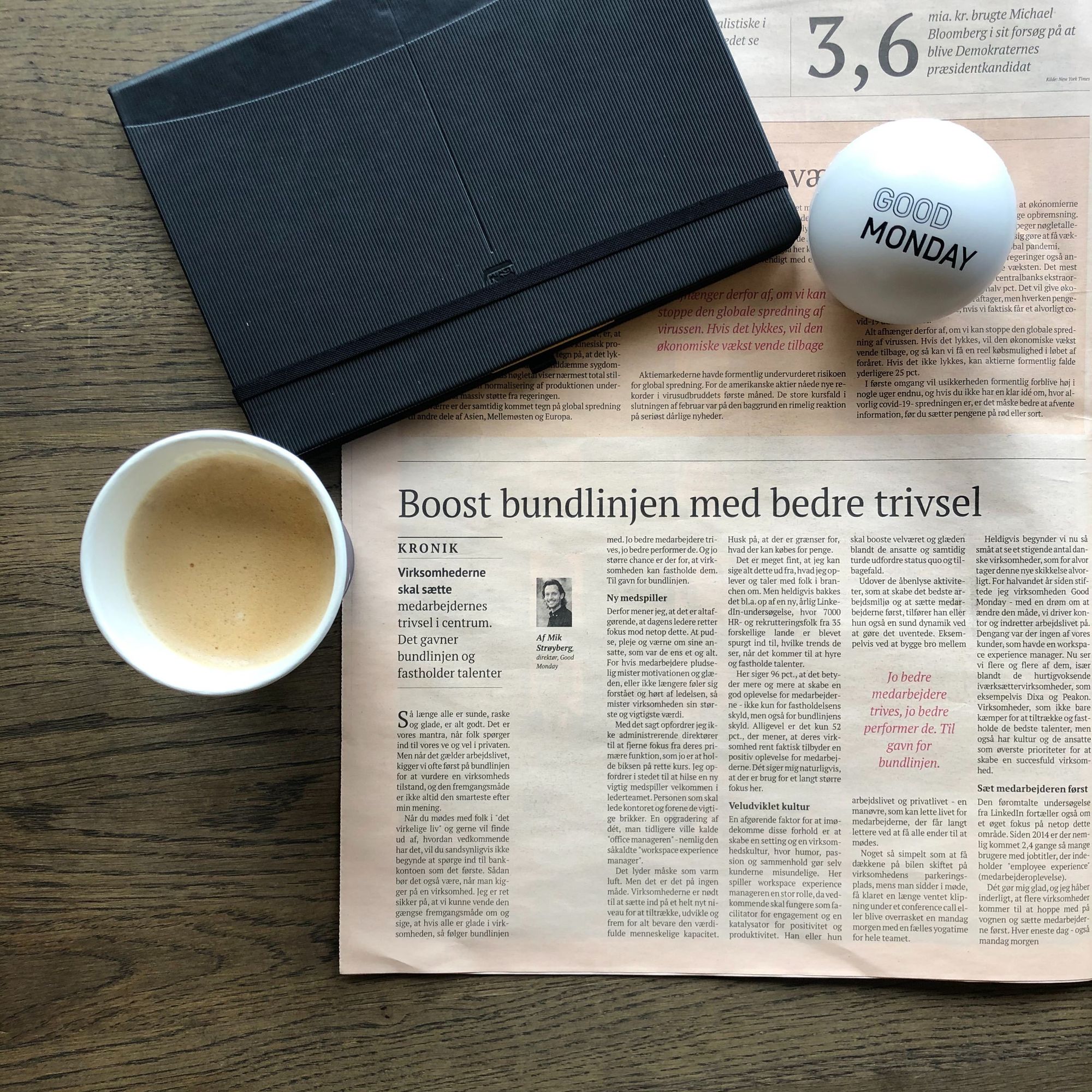Employees first. Bottom line last

You wouldn’t ask your friends and family about their financial status when enquiring about their well-being, so why must the health of a company always equate with its bottom line?
As long as everyone is healthy, sound, and happy, all is well. That seems to be our go-to mantra when we are asked about the ups and downs of our private lives.
But when it comes to our work life we always tend to look at the financial bottom line first to evaluate the condition of a company. And, frankly, I don’t believe that to be anywhere near best practice.
When we meet people out in the real world, we would never start out by asking them about their bank accounts.

I want to transfer this approach to company evaluation. I’m pretty sure it’s easy. The new mantra will be: as long as everyone in the company is happy, the bottom line will follow. Meaning that happy employees that thrive will lead to better overall performance and reduce employee churn. All bettering the bottom line of companies.
That’s why I find it of utmost importance for the leader of today to change focus towards all this. That you must care for, cherish, and support your employees above all else. What happens if your employees suddenly lose their motivation and happiness, and no longer feel appreciated and heard by management? In my opinion, that’s when the company loses its greatest and most important assets.
That being said, I’m definitely not encouraging CEOs to switch focus from their primary function, which is maintaining and improving their business. I’m encouraging a 'hello' to a new member of the management team. The person who will be running the office and unite the important bits and pieces. It’s an upgrade to the artist formerly known as office manager, I’m talking about the coming of workspace experience managers.
I’m talking about the coming of workspace experience managers
It might sound like hot air to you, but I assure you that this is solid. Companies have to engage themselves on a whole new level to attract, develop, and, most of all, maintain their human capacity. Remember, there are limits to what you can buy for money.
It’s all fine and dandy for me to say these things based on what I experience and talk to people in our business about. But luckily, it’s also backed up by a new LinkedIn study in which 7,000 people working within HR and recruitment were asked about the future trends of hiring and retaining talent. Almost all (96%) of the respondents say that it really matters to create the best experiences for employees, not only for retention purposes but also for the overall bottom line.
Yet only half (52%) find that their current company actually offers an overall positive experience for the employees. That definitely tells me that this needs to be a new area of focus.
Creating a setting and a company culture encompassing humour, passion, and unity is vital and will even create envy among your clients. This is where our new workplace experience manager comes into play as a facilitator for engagement and as a catalyst for positivity and productivity.
Besides obvious activities such as creating the best workspace environment and putting employees first, the workspace experience manager also adds a healthy dynamic by doing the unexpected. For example, creating a bridge between work life and private life - a manoeuver which could ease everyday life for employees allowing them to make ends meet much more easily.
Something as simple as having your tires changed in the company parking lot, or having a haircut between conference calls. It could also be a Monday morning surprise yoga class for the whole team.
Luckily we are already starting to see an increasing number of Danish companies taking this new role seriously. A year and a half ago, I created the company Good Monday with a dream of changing the way we run our offices and organise our work lives. Back then none of our clients had a workspace experience manager. But now, we are seeing more and more among them, especially among the fast-growing startups like Dixa and Peakon. These companies are not only working on attracting and retaining the best talent, but they also have company culture and employees as top priorities in order to build successful businesses.
The aforementioned LinkedIn study also highlights an increased focus on this particular area: since 2014 the titles on LinkedIn containing ‘employee experience’ have increased by 150%.
This makes me incredibly happy to see, and I honestly hope that more and more companies jump aboard this wagon and put their employees first. Every. Single. Day. Even Monday morning.


